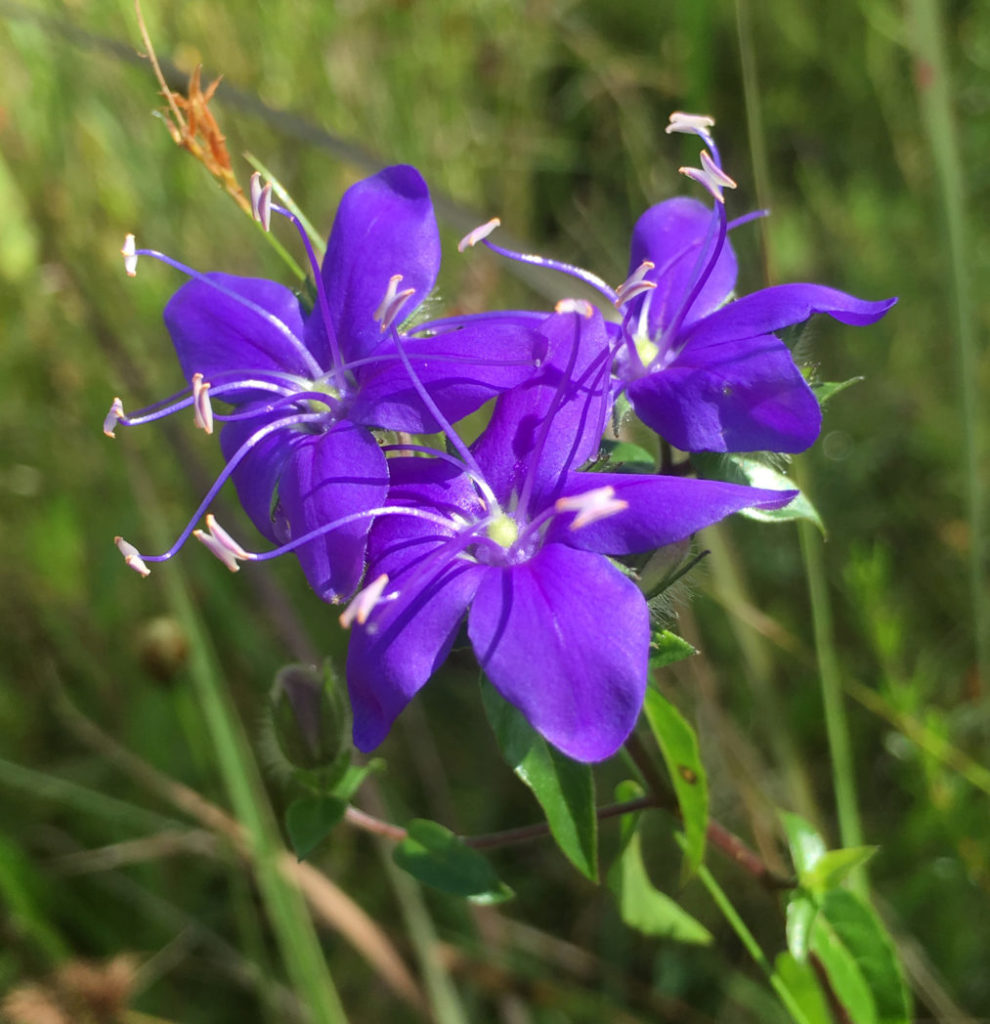Blue skyflower
Pictured above: Blue skyflower (Hydrolea corymbosa) by Stacey Matrazzo. Click on terms for botanical definitions. View post as a PDF.
Skyflower (Hydrolea corymbosa) is a herbaceous perennial wildflower that goes largely unnoticed — that is, until its bright and beautiful blooms appear. Borne in terminal or axillary corymbs (hence the species name corymbosa), the brilliant blue to purple flowers have a five-parted corolla. Filaments are long, extending well beyond the flower; anthers are covered with bright pinkish-orange pollen. The style is also elongated. Sepals are densely ciliate and appear fuzzy on unopened buds. Upper stems can be hairy; lower stems are smooth. Leaves are sessile and elliptic to lanceolate with serrated margins. They are alternately arranged. Fruit is an inconspicuous, oval-shaped capsule.
Skyflower blooms tend to open in the morning and fade toward the end of the day. Plants occur naturally in freshwater marshes, swamps, ponds, ditches, and wet pine flatwoods. It typically blooms summer into late fall. Flowers don’t produce much nectar, so butterflies are infrequent visitors. They attract mostly bees, which are necessary for the plant’s self-pollination.
Family: Hydroleaceae (False fiddleleaf family)
Native range: Peninsula and Eastern Panhandle
To see where natural populations of skyflower have been vouchered, visit florida.plantatlas.usf.edu.
Hardiness: Zones 8B–10
Soil: Wet to moist organic soils (can tolerate seasonal inundation)
Exposure: Full sun to minimal shade
Growth habit: Up to 2’ tall
Propagation: Seed, cuttings, division
Garden tips: Skyflower, when it is commercially available, makes a nice addition to a moist to wet landscape. It will slowly spread via suckering. In cool weather, skyflower dies back to the ground. New shoots will emerge from underground rhizomes in early spring. It is not drought- or salt-tolerant.
Skyflower plants may occasionally be available from nurseries that specialize in native plants. Visit www.plantrealflorida.org/ to find a nursery in your area.

